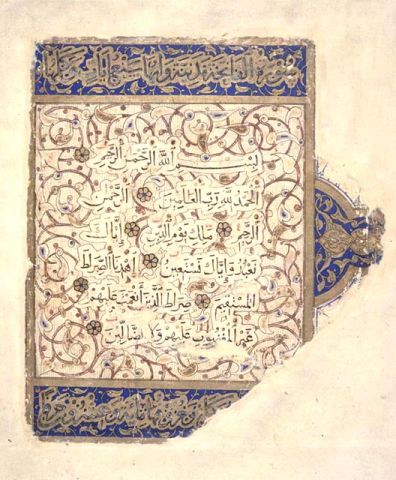Welcome
Friends: Ahlan
wa sahlan!
Muhammad
Asad’s explanation of this
Chapter.
Laleh
Bakhtiar’s explanation of this
Chapter.
سورة
الغاشية
'The
Enwrapper/ Enveloper’
From
Introduction of Yusuf Ali:
“This
is a late Surah of early Makkan period, perhaps close in date to
S.53. Its subject matter is the contrast between the destinies
of the Good and the Evil in the Hereafter---0n the Day when the true
balance will be restored: the Signs of God even in this life should
remind us of the Day of , for God is good and just, and His
creation is for a just Purpose.”
From
Introduction of Muhammad Asad:
“REVEALED
most probably about the middle of the Mecca period, this surah
derives its title from the participial noun al-ghashiyah in the first
verse.”
COMMENTS:
The
word 'ghaashiyah' is mentioned twice in the Qur'an, but here it is
THE Ghaashiyah, the definite article making it prominent, showing
that it is what was intended by all other references to it (HQ 7:41;
10:27; 12:107; 14:50; 29:55; 44:11).
- This Chapter begins by asking in conversational tone هل أتاك حديث asking the Messenger/ Listener in this instance whether the news of 'The Enwrapper' has come to 'you' ..
A
similar question on 'news/ Hadeeth' has appeared 5
times in the Qur'an. Please put 'Hadeeth' in 'Search.'
Then
we find verses 2- 7 mentioning those, on that Day/ at that Time
whose faces shall be subdued, toiling and weary as they are
conjoined to the searing fire, drinking of a 'scalding' spring (see
HQ 55:44), with no food other
than bitter-dry thorns which neither nourish nor suffice in
suppressing hunger.
After
dire Dissuasion, comes Persuasion, as we are told in Verses 8- 10 of
Faces blissful on that Day (HQ
83:24), well-pleased in their efforts, in high gardens... after
which Verses 11- 16 describe these gardens and we see a scene of
relaxation and beauty (see Yusuf Ali's explanation).
- Verses 17- 20 ask about Cognizant Humans, whether they do not contemplate creation around them, inferring that, had they done, so they would have magnified the Creator (from the high clouds to the raising of the Exalted Expanses, to the pitching of Mountain-ranges, to the spreading of the Earth..aren't those sufficient reminders?).
Here
we note that although 'ibil' is a word which denoted 'camels' (as in
HQ 6:144), it also means rain-bearing clouds, which seems to fit
this context better (see M.
Asad, and Zamakhshari,
who discusses this in Arabic).
- Verses 21- 22 speak directly to the Messenger in the second person singular telling him:
Therefore:
Remind! Indeed you are but a Reminder.
You
are not dominant (i)
over them.
This
absolves the Messenger of whatever results ensue from his efforts,
showing him that he would not be able to remind someone who turns
away and denies! This is also a warning that such a person would be
suffering the Greatest Suffering.
- The Chapter ends with two statements of fact, telling listeners that to 'Us' (God) is their return, and upon 'Us' (God) is their reckoning.
Peace
unto all!
_______________
.jpg)